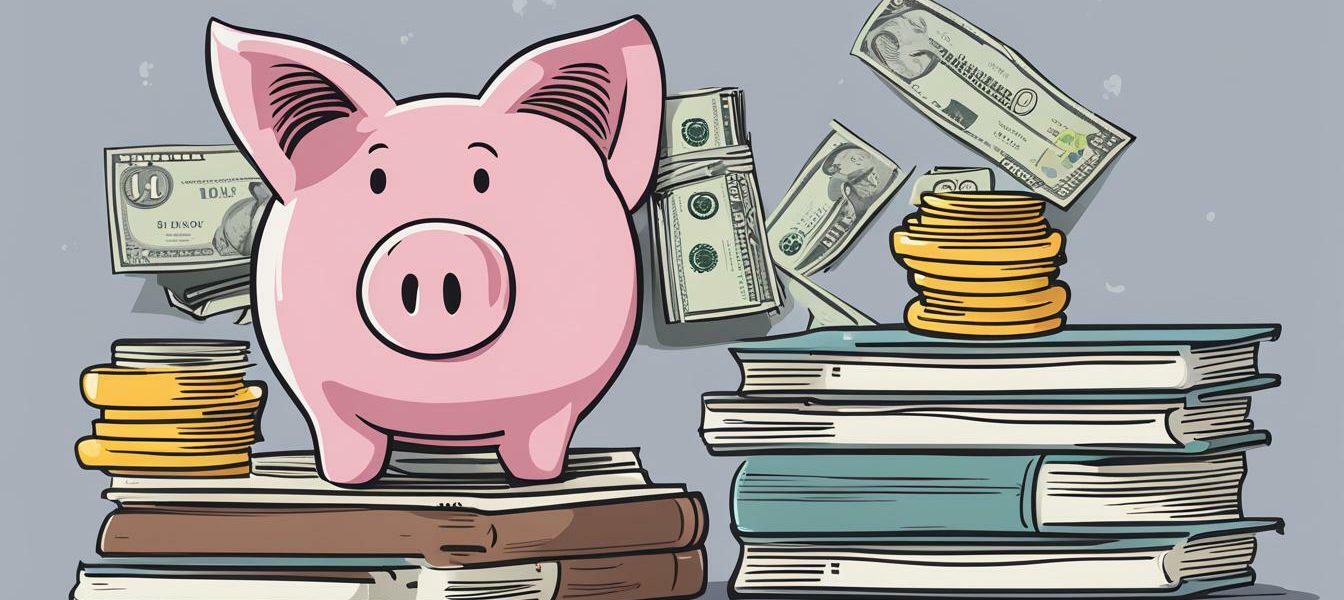
How Much Does Dental School Cost?
Dental school is a significant investment for those pursuing a career in dentistry. The cost of dental education can be a major consideration for prospective students, as it can add up to a substantial amount of debt. Understanding the costs associated with dental education is important when deciding to pursue a career in dentistry. In this article, we will explore the cost of dental school, including tuition fees and other expenses associated with dental education.
Key Takeaways:
- Dental school can be a costly investment.
- Prospective students need to familiarize themselves with the costs associated with dental education.
Understanding Dental School Tuition
Attending dental school can be a significant financial investment. According to the American Dental Education Association (ADEA), the average annual cost of tuition and fees for dental school was $37,031 for residents and $67,087 for non-residents in the 2020-2021 academic year. However, the cost of dental school tuition can vary widely based on a range of factors.
Factors Influencing Dental School Tuition
One of the most significant factors impacting dental school tuition is the location of the school. Tuition fees tend to be higher in states with higher costs of living and in private schools compared to public universities. Additionally, the length of the dental program can affect the cost, with longer programs costing more.
The reputation of the school and the type of program can also impact the cost of attending dental school. Specialized programs, such as orthodontics or endodontics, may charge higher tuition fees due to the additional training and resources provided.
Paying for Dental School Tuition
Many dental schools offer financial aid packages to help offset the high cost of tuition. This aid may include scholarships, grants, or loans. Private scholarships specifically for dental students are also available through various organizations.
For many students, loans are the primary source of funding for dental school. The Health Resources and Services Administration (HRSA) provides loans for health professionals, including dental students. Additionally, the federal government offers Direct Unsubsidized Loans and Direct PLUS Loans to cover the cost of attendance.
Managing Dental School Debt
Managing dental school debt is an important consideration for students after graduation. Dental school graduates typically have high levels of debt, with the average being around $292,000 for private dental school graduates in 2019, according to the American Dental Association (ADA).
One strategy for managing dental school debt is to explore income-driven repayment plans, which adjust monthly loan payments based on income levels and family size. Another option is to participate in loan forgiveness programs, such as the Public Service Loan Forgiveness program, which forgives federal loans for qualifying individuals after 10 years of service in a public sector job.
Understanding the costs associated with dental school tuition and exploring financial aid options can help make this investment more manageable for prospective dental students.
Additional Fees and Expenses in Dental School
While tuition fees are a significant expense in dental school, students should also prepare for additional fees and expenses that can quickly add up. These expenses can include but are not limited to:
| Expense | Cost Range |
|---|---|
| Textbooks | $200 – $1,000 per year |
| Laboratory fees | $1,000 – $5,000 per year |
| Equipment and supplies | $5,000 – $10,000 (one-time expense) |
| Board exams | $2,500 – $3,000 (one-time expense) |
| Living expenses | $15,000 – $30,000 per year |
Note: These figures are estimates and may vary depending on the dental school attended.
It’s important to factor these additional expenses into your budget when planning for dental school. Some dental schools may offer financial aid specifically for these expenses, but students should also research and consider other options for reducing these costs, such as buying used textbooks or living with roommates to save on housing expenses.
Financial Aid Options for Dental School
Attending dental school can be expensive, but there are many financial aid options available to help alleviate the costs of tuition and other expenses. Financial aid can come in the form of scholarships, grants, and loans, and it’s important to explore all of these options to determine the best route for you.
1. Scholarships
Scholarships are a great way to finance your dental education without taking on additional debt. Many dental schools offer scholarships to students based on academic merit, financial need, or other criteria. In addition, there are many external organizations that offer scholarships specifically for dental students. It’s important to research and apply for as many scholarships as possible to increase your chances of receiving financial assistance.
2. Grants
Grants are another type of financial aid that does not need to be repaid. They are typically awarded based on financial need, and can come from federal or state governments, as well as private foundations and organizations. Some dental schools may also offer grants to help offset the cost of tuition and other expenses.
3. Loans
While loans do need to be repaid, they can be a useful tool for financing your dental education. There are both federal and private student loan options available, with varying interest rates and repayment plans. It’s important to carefully consider the terms of any loan before accepting it, and to explore all possible options for financing before taking on debt.
In conclusion, there are many financial aid options available to help finance your dental education. Scholarships, grants, and loans can all be useful tools for offsetting the cost of tuition and other expenses. It’s important to research and apply for as many options as possible, and to carefully consider the terms of any loans or financial assistance before accepting them.
Loans for Dental School
Financing dental school can be challenging, but loans can help students manage the cost of tuition and other expenses. Here are some of the primary loan options available to dental school students.
Federal Direct Unsubsidized Loans
These loans are available to all graduate students, including dental students. The interest rate for unsubsidized loans is fixed at 6.08% for the 2020-21 school year. Students can borrow up to $20,500 per year, and repayment typically begins six months after graduation or if the student drops below half-time enrollment.
Federal Direct PLUS Loans
Graduate students can also apply for Direct PLUS loans, which can cover the full cost of attendance, minus any other financial aid received. The interest rate for Direct PLUS loans is fixed at 7.08% for the 2020-21 school year. To qualify, students must pass a credit check or find a co-signer who does. Repayment typically begins after graduation or if the student drops below half-time enrollment.
Private Loans
Private loans may also be an option for students who need additional financial assistance. Private loans can have higher interest rates than federal loans and may require a co-signer. It’s important to carefully compare loan terms and conditions before choosing a private loan.
Managing loan debt is an important aspect of dental school financing. Here are some tips for staying on top of loan repayment:
- Create a budget and stick to it
- Explore loan forgiveness programs
- Consider income-driven repayment plans
- Make payments on time to avoid late fees
Average Cost of Dental School
Attending dental school can be a significant investment, both in terms of time and money. According to the American Dental Education Association, the average total cost of attending dental school in the United States for the class of 2020 was $292,169 for private institutions and $231,764 for public institutions.
This estimate includes tuition fees, as well as other expenses associated with dental school, such as room and board, textbooks, equipment, and supplies.
It is essential to note that the total cost of attending dental school can vary depending on various factors, such as location, school reputation, program length, and specialization choices. Therefore, it is crucial to research and compare costs carefully when choosing a dental school.
Factors Affecting Dental School Costs
Several factors can impact the cost of dental school education. Here are some of the major ones to consider:
| Factor | Description |
|---|---|
| Location | The location of the dental school can have a significant impact on the cost of education. For example, schools located in high-cost-of-living areas may have higher tuition fees and living expenses. |
| School Reputation | Dental schools with a strong reputation may have higher tuition fees, but attending a prestigious school may also increase your job opportunities and earning potential after graduation. |
| Program Length | The length of the dental program can also impact the cost of education. Longer programs may have higher tuition fees and living expenses, but they may also provide more opportunities for specialization and advanced training. |
| Specialization Choices | Choosing to specialize in a particular area of dentistry can also impact the cost of education. Specialized training programs may have higher tuition fees and require additional years of study. |
It’s important to consider these factors when budgeting for dental school and choosing a program that is right for you. Keep in mind that financial aid, scholarships, and other resources may be available to help offset some of the costs.
Strategies to Make Dentistry Education More Affordable
Attending dental school can be expensive, but there are several strategies you can use to make your dental education more affordable. Here are some tips to consider:
- Apply for financial aid: Dental schools typically offer financial aid options for their students, including scholarships, grants, and loans. Be sure to complete the Free Application for Federal Student Aid (FAFSA) to determine your eligibility for federal financial aid programs.
- Look for scholarships: In addition to financial aid offered by dental schools, there are various scholarships available to dental students. Search for national and local scholarships that are specifically geared towards dental students.
- Consider attending a public school: Public dental schools are generally less expensive than private dental schools. It may be worth researching public dental schools in your state or region as a more affordable option.
- Live frugally: While attending dental school, consider adopting a more frugal lifestyle. This could mean living with roommates, cooking meals at home instead of eating out, or finding affordable entertainment options.
- Find used resources: Textbooks and equipment can be expensive, but there are often used versions available at a discounted price. Check online marketplaces or used bookstores to find these resources.
- Explore alternative education pathways: There are also alternative educational pathways to consider, such as enrolling in a community college before transferring to a four-year dental school or attending an accelerated dental program.
By implementing these strategies, you can help reduce the overall cost of attending dental school. Remember, it’s important to carefully consider all of your options and make an informed decision about which dental school to attend.
Conclusion
Attending dental school can be a costly investment, with tuition, fees, and other expenses adding up quickly. However, for those passionate about pursuing a career in dentistry, there are ways to make dental education more affordable.
By understanding the various costs involved in dental school and exploring financial aid options such as scholarships, grants, and loans, students can create a plan to manage their expenses effectively. Additionally, taking advantage of cost-saving strategies like budgeting, finding affordable resources, and exploring alternative educational pathways can further reduce the overall cost of dental school.
Plan Ahead
One of the most important things to keep in mind when considering dental school is to plan ahead. Researching different dental schools and their associated costs can provide valuable insight into what to expect. Furthermore, exploring financial aid options early on can give students a better idea of what kind of awards they may qualify for.
Explore Financial Aid Options
There are many financial aid options available to dental school students, including scholarships, grants, and loans. Some scholarships are even specific to dental students, so it’s important to research all options thoroughly. Additionally, some states offer loan repayment programs to graduates who practice in underserved areas, providing another option for managing the cost of dental education.
Consider Alternative Pathways
While traditional dental school programs can be costly, there are alternative pathways to becoming a dentist that may be more affordable. For example, some community colleges offer pre-dental programs that can provide a foundation for dental education at a lower cost. Additionally, some dental schools offer shorter, more focused programs that may be less expensive than a traditional four-year program.
Overall, the cost of dental education can be significant, but with careful planning and exploration of financial aid options and alternative pathways, it is possible to make dental school more affordable.



